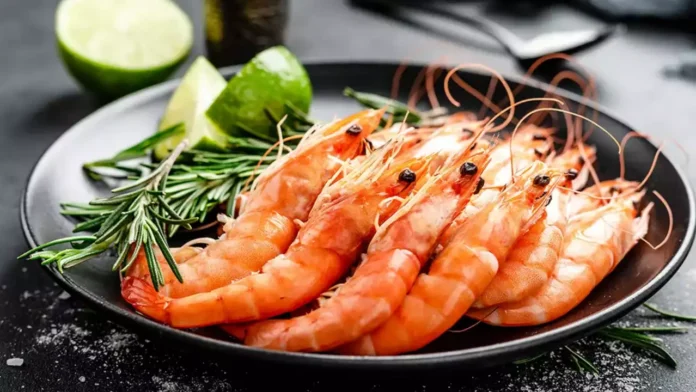The Union government is actively formulating a INR 576 crore aquaculture plan in four northern states. The objective is to establish a hub for shrimp farming dedicated to both export and domestic consumption. This initiative involves harnessing land unsuitable for conventional crop cultivation, as revealed by two officials familiar with the matter.
Over the past year, officials and scientists from the department of fisheries and the Central Institute of Brackishwater Aquaculture examined thousands of hectares of saline wasteland unsuitable for crops in 25 districts of Uttar Pradesh, Rajasthan, Haryana, and Punjab. One anonymous source revealed that they identified clusters in these regions where shrimp aquaculture could prove to be productive.
The researchers discovered that the productivity of cultivated crustaceans, or the output per hectare, in Haryana is comparable to the global average, ranging around 6-7 tonnes. This finding positions Haryana as a potential significant hub for shrimp farming, considering that the majority of shrimp farming currently takes place in the coastal states of the country.
India has received backing for its shrimp farming endeavors from international organizations such as the World Bank, Food and Agriculture Organization, and Asian Development Bank. The nation stands as one of the leading exporters of cultured shrimp. Recent industry reports indicate that the Indian seafood sector is poised for rapid expansion, facilitated by the approval of the Coastal Aquaculture Authority (Amendment) Bill 2023 by both houses of Parliament. As of 2022, India holds the position of the second-largest aquaculture shrimp producer, with a production of 900,000 tonnes, trailing behind Ecuador.
Eco-Friendly Shrimp Hubs in Northern India:
On a global scale, shrimp farming is recognized for its significant freshwater consumption, typically operated by large corporations and associated with ecological harm. The highly mechanized shrimp industry often overlooks the importance of local employment and tends to relocate when faced with stringent regulations. Environmental activists refer to this phenomenon as the “hamburger connection,” wherein Central American rainforests are cleared to facilitate shrimp cultivation, ultimately supplying shrimp for use in burgers.
“The difference with the shrimp hubs in these states will that they will be eco-friendly, using technologies such as biofloc and will come up only on unproductive wasteland,” said Sagar Mehra, joint secretary in the fisheries department.
The shrimp clusters have the objective of creating 50,000 jobs within the local community, encompassing direct employment as well as positions in ancillary activities like warehousing and cold storages. A state-of-the-art aqua park in Bhiwani, funded with INR 100 crore, is slated to function as a training center, as mentioned by a second official who preferred to remain anonymous.
Each kilogram of farmed shrimp results in the production of around 15,000 liters of effluent, often carrying toxic residues. This untreated mixture is commonly released into the groundwater, causing the contamination of drinking water in local communities.
The shrimp hubs in northern India will employ biofloc technology developed by the Central Institute of Brackishwater Aquaculture. This technology will handle excreta and other wastes on-site, converting them into feed for the crustaceans.
The Pradhan Mantri Mudra Yojana, with a funding distribution of 60:40 between the Centre and states, seeks to establish aquaculture assets capable of generating 5.5 million livelihoods nationwide by 2025. Through this micro-credit scheme, funds will be provided to support new shrimp farmers.
The selected districts for the project comprise Rohtak, Fatehabad, and Gurugram in Haryana, along with Mathura, Agra, and Hathras in Uttar Pradesh. Additionally, the chosen districts include Fazilka, Muktsar, and Mansa in Punjab, as well as Ganganagar and Churu in Rajasthan.
“The key to this project’s success will be to ensure there is handholding from start to finish and export avenues and remunerative prices are ensured through market linkages,” said CV Balakrishna, a former marine consultant with the FAO.
The first official mentioned that agreements are anticipated to be signed with the Marine Products Export Development Authority for exports.
Continue Exploring: Andhra Pradesh’s Srikakulam district emerges as a global hub for shrimp exports, generating INR 10,000 Crore annually


